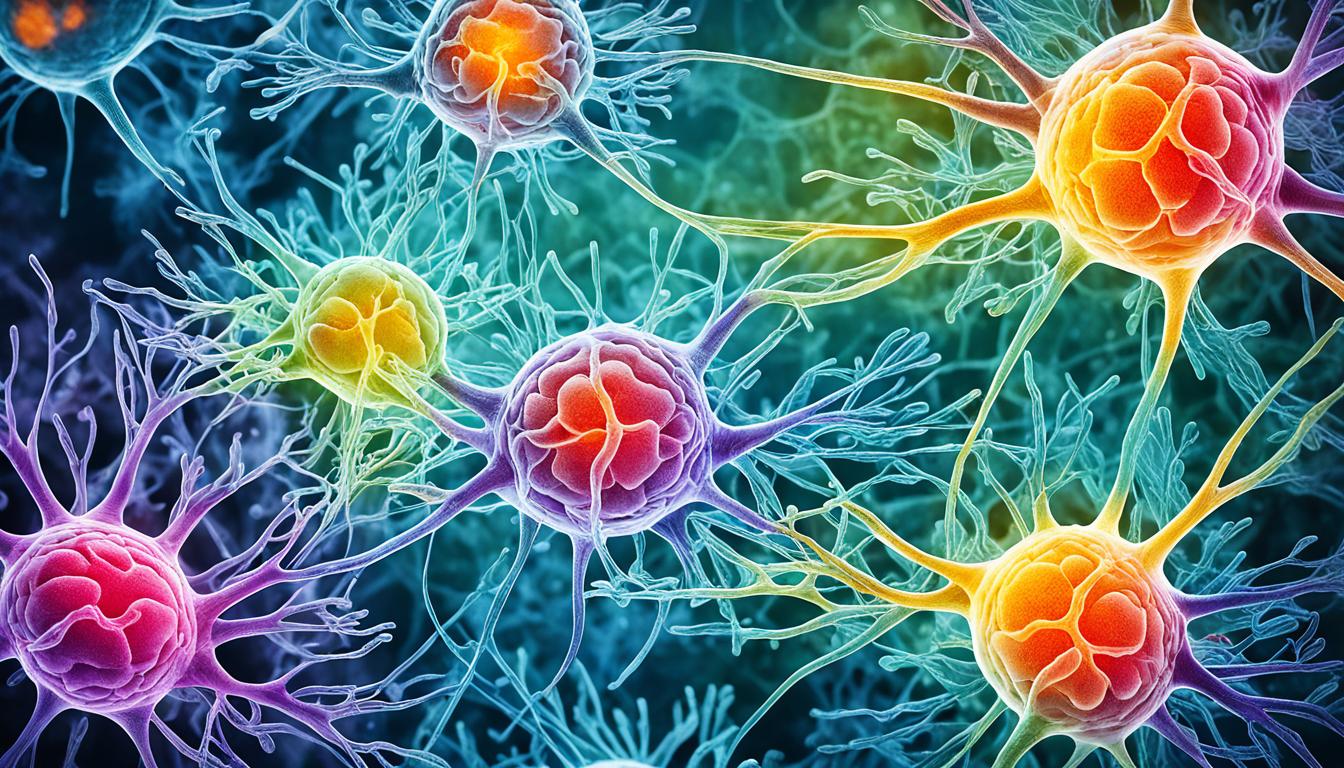A mood disorder can change how someone feels, swinging between extreme happiness and deep sadness. It can make living a normal life hard. Recognizing the signs and knowing how they come about is key to finding the best ways to treat them.
These disorders don’t pick a specific age group. In the US, 7% of adults might deal with depression, while 2.8% could have bipolar disorder. This shows mental health issues are common and important to address.
Doctors look for ongoing symptoms to diagnose mood disorders. They want to make sure it’s not just a regular mood swing. Getting the right diagnosis is the first step to finding the best treatments.
Starting to talk about your feelings is the first step to getting better. Symptoms often include feeling very sad, worried, or angry for a long time. You might not enjoy things you used to. Other signs are changes in eating or sleeping habits and extreme tiredness. Thoughts of hurting yourself are also a serious sign. When you recognize these, it’s important to seek help.
The exact cause of these mood changes is still a mystery. But, things like genes, life events, and stress are thought to play a part. Science is always finding out more about these illnesses and what causes them.
Treatments usually include therapy, drugs, and lifestyle changes. But, new therapies like stem cell treatment are showing hope. Stem cells might help people with hard-to-treat mood disorders respond better to therapy. They could be the future of mental health care.
Key Takeaways:
- Mood disorders, like depression and bipolar, can really disrupt life.
- Doctors look for symptoms lasting several weeks to make a correct diagnosis.
- These disorders can impact anyone, from kids to mature adults.
- They come from a mix of genes, life situations, and how we think.
- Stem cell therapy gives new hope for those with difficult mental health conditions.
Different Types of Mood Disorders
Mood disorders are different types of conditions. They include depression, bipolar disorder, PMDD, and DMDD. Knowing about these disorders is key to helping people get the right treatment.
1. Depression
Depression is when you feel very sad all the time. You might lose interest in doing things you love. It can lead to changes in how you eat and sleep. There are several types, like postpartum depression and seasonal affective disorder.
2. Bipolar Disorder
Bipolar disorder causes extreme mood swings. You might feel super happy and full of energy, then very sad. These ups and downs can affect how you go about your daily life.
3. Premenstrual Dysphoric Disorder (PMDD)
PMDD makes PMS symptoms much worse. This can include feeling very emotional and not like yourself before your period starts.
4. Disruptive Mood Dysregulation Disorder (DMDD)
DMDD is found in children. It makes them have a lot of angry outbursts and feel easily irritated.
Innovative Treatment Options for Mood Disorders: Stem Cell Therapy
Current treatments for mood disorders include therapy and medication. But there are new methods that look very promising, like stem cell therapy.
Stem cell therapy has shown results in treating issues like schizophrenia and autism. For example, schizophrenia brings delusions and hallucinations. Stem cell therapy targets these issues by working on the brain’s circuits. Studies in China and Japan found that patients with schizophrenia improved after receiving this therapy.
Stem cells also show promise for autism, helping the brain’s cells regenerate. This can make social interactions and communication better for those with autism. Kids who got these stem cells from umbilical cords saw their ability to communicate and speak get better.
This kind of therapy could be a game-changer. It has the potential to really help those with mood disorders more than classic treatments can.
Innovative Treatment Options for Mood Disorders: Stem Cell Therapy
Traditional treatments for mood disorders like medication and therapy are helpful. But, new methods like stem cell therapy show a lot of promise. It’s being used to treat conditions such as schizophrenia and autism successfully.
Schizophrenia causes severe problems like delusions and hallucinations. Stem cell therapy might help by fixing brain circuits. Studies in China and Japan have found that it can improve how the brain works in patients.
For those with autism, which affects how they interact and speak, stem cell therapy could be a game-changer. It can repair brain cells, making the nervous system stronger. Children who have received this treatment with umbilical cord-derived stem cells have shown better social skills and speech.
Stem cell therapy’s unique abilities offer real hope. It goes to the source of mood disorders and can vastly improve treatment results. This means hope for a better life for those facing mood disorders.

